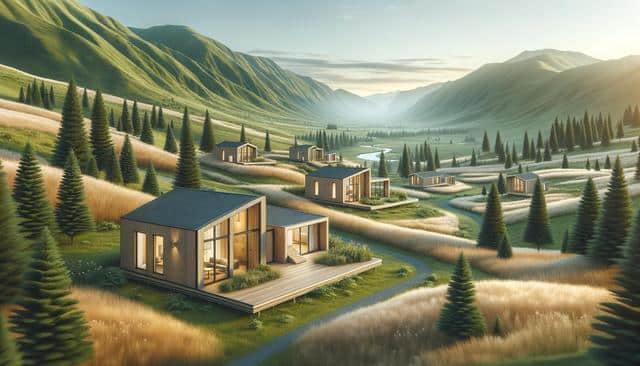Understanding Modular Homes
Modular homes represent a remarkable evolution in the housing sector, providing an outstanding balance between quality, flexibility, and affordability. These homes are built in sections or modules in a controlled factory environment, which ensures precise construction standards and reduces material waste. Once completed, the modules are transported to the construction site and assembled into a final structure. This method not only accelerates the building process but also offers homeowners the opportunity to personalize their space according to specific needs and preferences. Whether you’re drawn to the simplicity of a one-bedroom unit or the spaciousness of a four-bedroom layout, modular homes can cater to diverse lifestyle choices.
Benefits of Modular Homes
One of the most compelling advantages of modular homes is their ability to deliver exceptional quality and efficiency. Built in climate-controlled settings, these homes are less affected by weather delays, leading to quicker completion times. Additionally, the systematic construction approach minimizes errors and enhances structural integrity. Furthermore, modular homes are known for their energy efficiency, often incorporating top-rated insulation and energy-saving systems. Homeowners can expect:
- Reduced energy bills due to efficient heating and cooling systems
- Lower maintenance costs owing to durable construction materials
- A variety of eco-friendly features, such as solar panels and water-saving fixtures
These benefits make modular homes an attractive option for those seeking a sustainable and cost-effective living solution.
Tailoring Your Modular Home
Customization is a significant factor in the appeal of modular homes. Buyers have the flexibility to design their homes to reflect their personal taste and lifestyle needs. From choosing the number of bedrooms and bathrooms to selecting finishes and fixtures, the possibilities are extensive. Modular homes can be tailored to suit various family sizes and preferences, whether it’s a single-story layout or a multi-level floor plan. Additionally, modular homes can adapt over time, allowing for expansions or modifications as needs change. This adaptability ensures that your home remains relevant and functional throughout different life stages.
Overcoming Common Misconceptions
Despite their growing popularity, modular homes are sometimes misunderstood. A common misconception is that they lack durability, but in reality, these homes are built to withstand rigorous transportation and assembly processes, often meeting or exceeding traditional building codes. Another misunderstanding is that modular homes offer limited design options, when in fact, they provide a wide range of customizable features and styles. Clearing these misconceptions is essential for potential homeowners to fully appreciate the value and versatility of modular living.
Financial Considerations
Investing in a modular home can be a financially sound decision. The cost-effectiveness arises from streamlined construction processes and reduced labor expenses. Additionally, many financial institutions offer loans specifically tailored for modular home purchases, making the buying process more accessible. It’s important for potential buyers to research and understand the financing options available, as well as any local incentives for sustainable building practices that might apply. By doing so, homeowners can secure a dwelling that fits their budget while providing long-term value and sustainability.
Conclusion
Modular homes present a forward-thinking solution for those seeking a blend of efficiency, customization, and affordability in their living spaces. By understanding their unique benefits and dispelling common myths, potential homeowners can make informed decisions about embracing this innovative approach. Whether you require a compact, efficient space or a larger, versatile home, the modular option can provide an exceptional living experience tailored to your needs.
